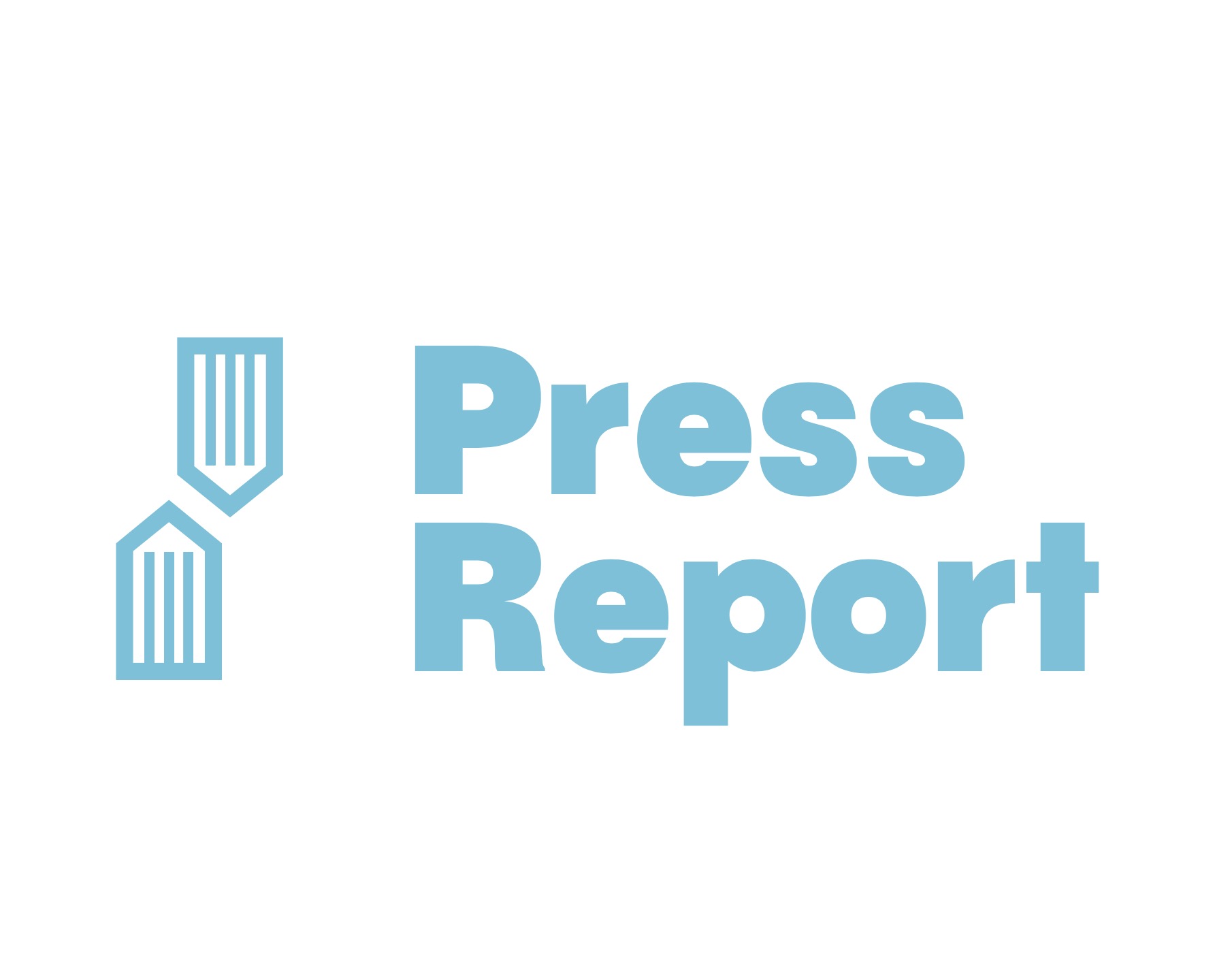AI News
Mysterious AI Systems: A Threat or Innovation

As we delve into the realm of artificial intelligence, we are met with a mysterious world shrouded in secrecy. The inner workings of these advanced AI technologies remain hidden, leaving us to question whether they pose risks or herald exciting advancements.
With reports of limited transparency, concerns arise about the risks and benefits these systems bring. In this article, we explore the need for openness in AI, examining the impacts and potential benefits, to determine if these enigmatic systems hold true innovation or pose a threat.
Join us on this journey of discovery.
Key Takeaways
- Lack of transparency in AI systems and models hinders scientific advances, accountability, reliability, and safety.
- Openness in AI can lead to significant advancements in the field and promote a scientific discipline rather than a profit-driven industry.
- More openness in AI, including access to data and algorithms, is crucial for reproducibility and scientific advancement.
- Transparency in AI systems builds trust, fosters collaboration and innovation, and allows for the identification and mitigation of biases and ethical concerns.
Lack of Transparency in AI Systems
Lack of transparency in AI systems poses significant concerns in terms of accountability, reliability, and safety.

Secrecy in AI research and the lack of transparency and accountability in AI development hinder the progress of scientific advancements.
Companies like OpenAI, for example, withhold information about training data and algorithms, which not only prevents misuse but also gives competitors an unfair advantage.
A recent report from Stanford University highlights the deep secrecy surrounding AI systems such as GPT-4. The report suggests that models can become more open without sacrificing competitiveness.
More openness in AI is crucial for the scientific discipline to thrive and avoid becoming solely profit-driven. It enables reproducibility, collaboration, and innovation, while also addressing concerns related to biases and ethical considerations.
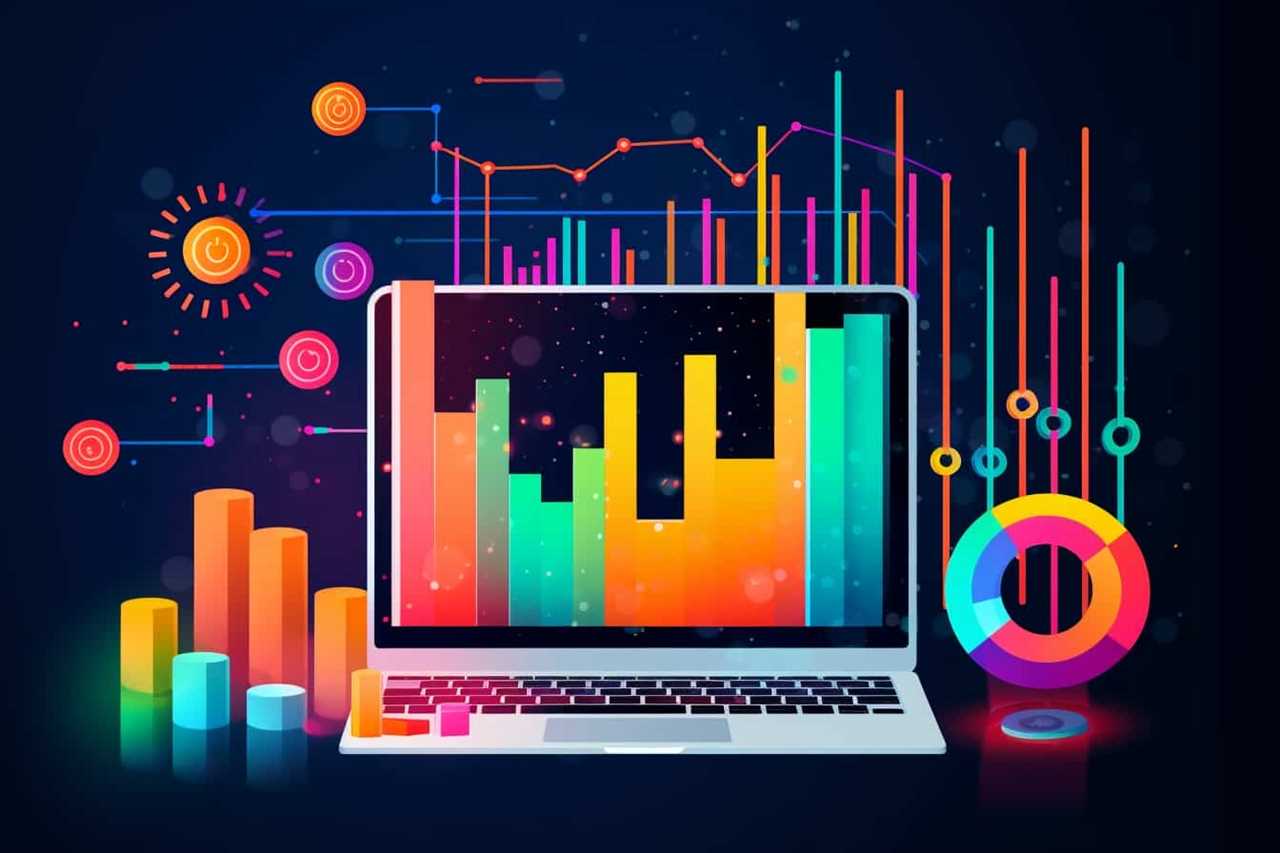
Ultimately, transparency in AI systems is necessary for responsible and accountable development and deployment.
Impact on Scientific Discipline
With its lack of transparency, AI systems have the potential to undermine the scientific discipline and hinder its progress. The impact on scientific discipline is significant, as it faces challenges in maintaining transparency and accountability in AI development.
Here are three key ways in which AI systems affect the scientific discipline:
- Scientific Advancement: Lack of transparency in AI models hampers scientific advances by limiting reproducibility and hindering collaboration. Open access to data behind AI models is crucial for scientific progress.
- Reliability and Safety: Without transparency, it becomes difficult to ensure the reliability and safety of AI systems. Transparency facilitates the identification and mitigation of biases and ethical concerns, leading to responsible and accountable development.
- Profit-driven Approach: The secrecy surrounding AI systems risks transforming the field into a profit-driven industry rather than a scientific discipline. Openness in AI is necessary to prevent a closed and proprietary situation that stifles innovation.
To overcome these challenges, it’s essential to prioritize transparency and accountability in AI development to safeguard the integrity of the scientific discipline.

Need for Openness in AI
Openness is crucial in the development of AI systems. It’s essential to address the challenges that arise from the lack of transparency in AI. The ethical implications of secretive AI systems can have far-reaching consequences. Without openness, it becomes difficult to ensure accountability, reliability, and safety.
Transparency in AI models and algorithms allows for better understanding and evaluation of their capabilities and limitations. It also fosters collaboration and innovation by enabling public access to AI model data.
More importantly, openness in AI can help identify and mitigate biases and ethical concerns. By promoting responsible and accountable development and deployment, openness in AI ensures that the technology serves the best interests of society.
Potential Benefits of Transparency
Promoting transparency in AI systems brings forth significant benefits in building trust, understanding capabilities, and fostering collaboration. Here are three key advantages of transparency in AI:

- Improving accountability: Transparency allows users and stakeholders to hold AI systems accountable for their actions. By providing visibility into the inner workings of AI models and algorithms, we can better understand how decisions are made, identify biases, and ensure that AI systems are fair and unbiased.
- Collaborative innovation: Openness and transparency enable collaboration among researchers, developers, and users. When AI systems are transparent, it becomes easier to share knowledge, exchange ideas, and collectively work towards improving the technology. This fosters innovation and accelerates the development of responsible and ethical AI solutions.
- Ethical considerations: Transparency in AI systems facilitates the identification and mitigation of biases, discriminatory practices, and other ethical concerns. By exposing the underlying data and algorithms, we can ensure that AI systems are aligned with societal values and respect individual rights. This helps to build a more inclusive and equitable AI ecosystem.
Concerns and Impacts of AI Development
One major concern of AI development is the potential impact on privacy and targeted advertising. As AI systems become more advanced, there’s a growing risk of invasion of privacy. These systems have access to vast amounts of personal data, which can be used to target individuals with personalized advertisements. This raises concerns about the misuse of personal information and the erosion of privacy rights.
Additionally, the impact of AI on the job market is another significant concern. As AI technologies automate tasks traditionally performed by humans, there’s a fear of job displacement and unemployment. It’s important to carefully consider the ethical and societal implications of AI development to ensure that privacy rights are protected and the job market isn’t adversely affected.
Role of WIRED in Technology Advancements
WIRED plays a pivotal role in driving technology advancements and fostering innovation in the field of AI. With its influential platform and responsible technology reporting, WIRED has a significant impact on shaping the future of AI.
Here are three ways WIRED’s influence positively contributes to the advancements in AI:

- In-depth coverage: WIRED explores the impact of AI on various aspects of life, providing insightful and comprehensive coverage that helps readers understand the potential of AI and its implications.
- Uncovering breakthroughs: WIRED uncovers and highlights the latest breakthroughs and innovations in AI, showcasing the cutting-edge research and advancements that push the boundaries of what AI can achieve.
- Responsible reporting: WIRED ensures responsible use of information, protecting users’ privacy rights while promoting transparency and ethical considerations in AI development. By providing unbiased and accurate reporting, WIRED fosters a culture of responsible technology adoption.
Through its influence and commitment to responsible technology reporting, WIRED plays a vital role in advancing AI and shaping a future where technology is used responsibly and for the benefit of humanity.
Secrecy in Training Data and Algorithms
The lack of transparency in AI systems and models raises concerns about the training data and algorithms used. This secrecy has ethical implications and provides companies with a competitive advantage. By withholding information about their training data and algorithms, companies like OpenAI are able to prevent misuse and maintain an edge over their competitors.
However, this lack of transparency reduces scientific advances, accountability, reliability, and safety. A recent Stanford University report revealed deep secrecy surrounding AI systems like GPT-4, with none of the assessed models achieving more than 54% transparency across all criteria.
It’s important to consider how models could become more open without losing their competitive edge, as increased transparency in AI can address concerns regarding ethical implications and promote responsible and accountable development and deployment.

Reduction in Scientific Advances
Our understanding of AI systems and their potential for scientific advancements is hindered by the lack of transparency in their training data and algorithms. This reduction in transparency and collaboration inhibits research and limits the progress of scientific disciplines.
Here are three key points to consider:
- Reduction in research: A lack of transparency in AI systems restricts access to crucial information, hindering researchers from studying and building upon existing models. This reduction in research opportunities stifles scientific advancement and limits the potential for groundbreaking discoveries.
- Lack of collaboration: Without transparency, collaboration between different research teams becomes difficult. The absence of shared knowledge and open access to data inhibits the collective effort to solve complex problems. Collaboration fosters innovation and accelerates scientific advancements, making it crucial for AI systems to promote openness and collaboration.
- Implications for scientific progress: The secrecy surrounding AI systems creates a closed and proprietary environment. This hampers the exchange of ideas, slows down the pace of scientific progress, and limits the benefits that society can derive from AI technologies. Embracing transparency and fostering collaboration would enable responsible and accountable development, leading to more significant scientific advances.
Openness in Late 2010s
In the late 2010s, we witnessed a significant shift towards openness in the field of AI. Openness in AI has become a catalyst for innovation, driving advancements and pushing boundaries. It has also brought ethical considerations to the forefront of AI development.
| Openness in AI: Catalyst for Innovation | Ethical Considerations in AI Development | Benefits of Openness |
|---|---|---|
| Encourages collaboration and knowledge sharing | Addresses biases and promotes fairness | Builds trust and transparency |
| Fosters reproducibility and scientific advancement | Mitigates ethical concerns | Enables better understanding of AI models |
| Drives responsible and accountable development | Ensures accountability and reliability | Facilitates identification and mitigation of biases |
This shift towards openness has allowed for a more responsible and accountable approach to AI. By sharing data, algorithms, and models, the AI community can work together to ensure the ethical development and deployment of AI systems. Openness not only fosters innovation but also builds trust and transparency, crucial elements for a society that values freedom and progress.
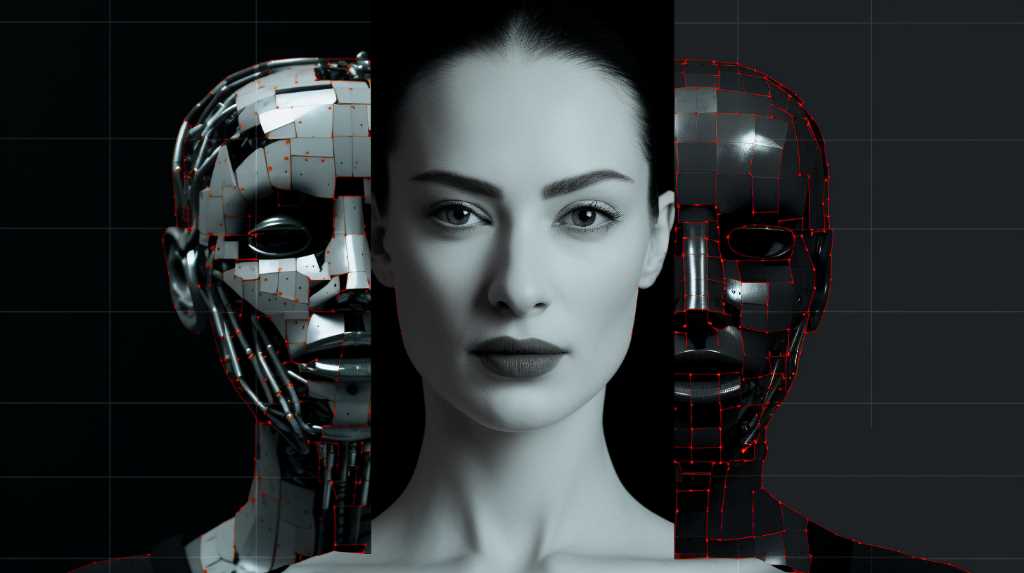
Widening Access to Data
Widening access to data allows us to harness the power of AI in a more responsible and collaborative manner. Here are three key reasons why data accessibility is crucial for collaborative innovation in AI:
- Fostering diversity and inclusivity: When data is accessible to a broader range of individuals and organizations, it promotes diversity in AI development. This inclusivity leads to a wider representation of perspectives and experiences, resulting in more comprehensive and unbiased AI systems.
- Accelerating scientific advancements: Open access to data behind AI models enables reproducibility and encourages scientific advancement. When researchers and developers have access to data, they can build upon existing models, refine algorithms, and push the boundaries of AI capabilities.
- Fueling innovation and collaboration: Public access to AI model data facilitates collaboration among researchers, developers, and stakeholders. By sharing data, ideas, and insights, a collaborative environment is created where innovations can flourish. This collaborative approach accelerates the development and deployment of responsible AI systems.
AI Models and Danger
With AI models becoming increasingly sophisticated and pervasive, understanding the potential dangers they pose is essential for responsible and accountable development. The ethical implications and privacy concerns surrounding AI models have become major points of discussion.
As these models are deployed in various industries, there’s a growing need to address the potential risks they present. One of the main concerns is the lack of transparency in AI systems and models, which can hinder scientific advances, accountability, reliability, and safety. Companies like OpenAI have been criticized for their lack of transparency regarding training data and algorithms. This lack of openness also raises concerns about the potential for misuse and the preservation of competitors’ advantage.
Additionally, the rise of AI chatbots, such as ChatGPT, raises privacy concerns and the potential for targeted advertising. Understanding these ethical implications and privacy concerns is crucial in order to mitigate the risks associated with AI models and ensure responsible development.
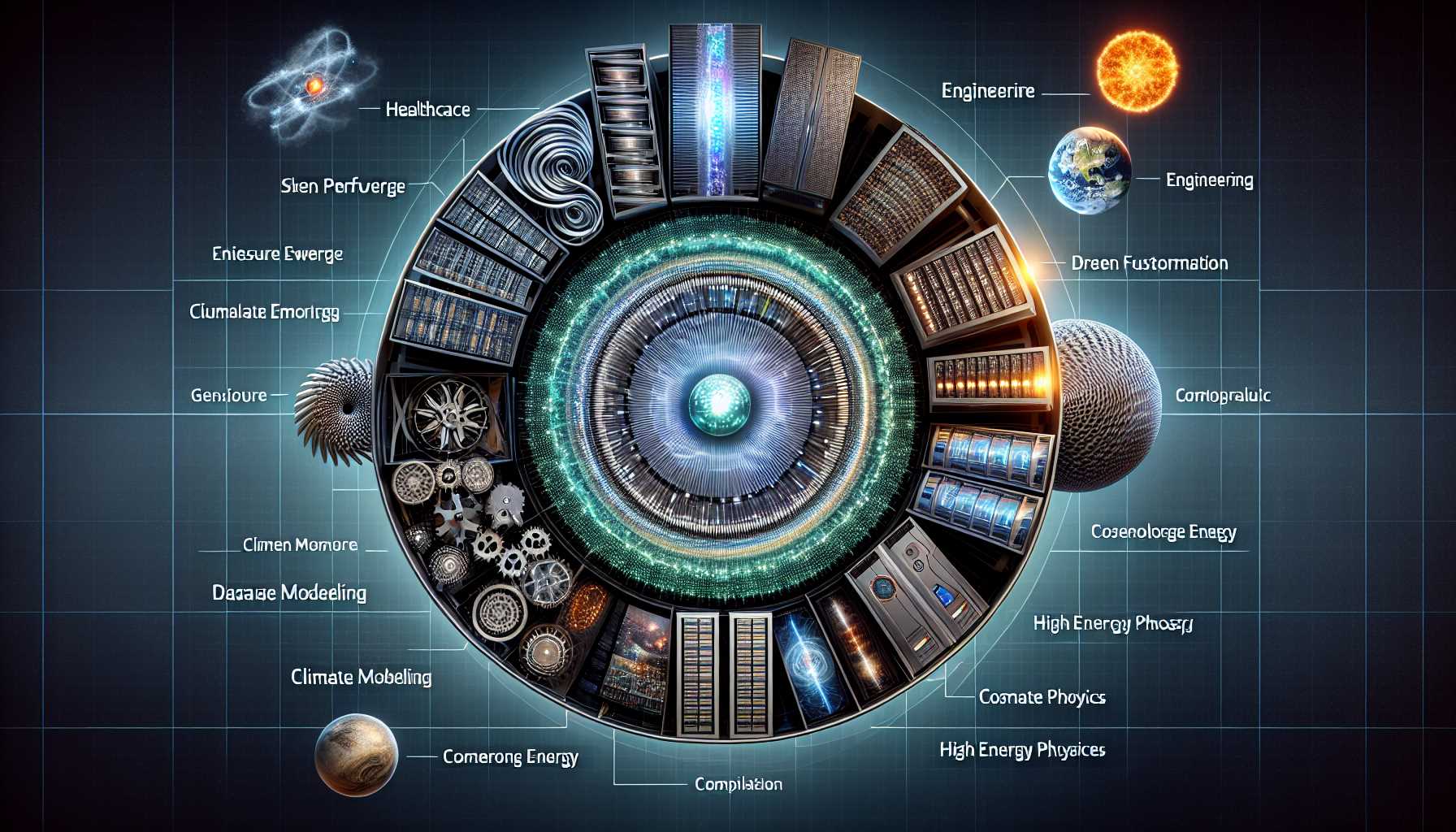
Trust and Understanding in AI Systems
To foster trust and understanding in AI systems, we must prioritize transparency and open access to crucial information. Building trust in AI is essential for its responsible development and deployment.
Here are three key reasons why transparency is crucial:
- Ethical implications: AI systems have the potential to impact our lives in profound ways. Transparency ensures that these systems are developed and used ethically, addressing concerns related to biases, discrimination, and privacy.
- Accountability: Openness in AI allows for greater accountability. By making the inner workings of AI systems accessible, we can identify and address any issues or biases that may arise, ensuring that AI is used in a fair and responsible manner.
- Public understanding: Transparency enables better understanding of AI systems’ capabilities and limitations. It empowers users and stakeholders to make informed decisions, fostering a sense of trust in AI technologies.
Frequently Asked Questions
How Does the Lack of Transparency in AI Systems Impact Scientific Advancements?
The lack of transparency in AI systems hinders scientific advancements by limiting accountability and ethical considerations. It is essential to address these concerns in order to ensure responsible and accountable development in the field of AI.
What Are the Potential Benefits of Transparency in AI Systems?
Transparency in AI systems benefits society by fostering trust, enabling collaboration, and promoting responsible development. Ethical implications are addressed, and societal concerns, like privacy and bias, can be identified and mitigated.

What Are the Concerns and Impacts of AI Development, Specifically in Relation to Chatbots?
Ethical implications of AI development, specifically in relation to chatbots, include concerns about privacy, targeted advertising, and misinformation. These issues can impact user trust and the reliability of web search results.
How Does WIRED Contribute to Technology Advancements and the Field of Ai?
Wired contributes to technology advancements by providing insightful coverage of AI ethics. Their objective and analytical approach ensures responsible use of information, protecting users’ privacy rights while exploring breakthroughs and challenges in the field.
How Does the Secrecy Surrounding TrAIning Data and Algorithms Affect AI Models and Their Potential for Scientific Advances?
Secrecy implications in AI models hinder scientific advances and innovation. Lack of transparency in training data and algorithms limits accountability and reliability. Algorithmic bias remains unchecked without open access to crucial information.
Conclusion
In conclusion, the lack of transparency in AI systems poses significant risks and hinders scientific advancement. However, there’s hope for change as experts argue that more openness in AI can lead to significant benefits.

By embracing transparency, we can ensure accountability, reliability, and safety in AI development.
It’s crucial to navigate the enigmatic world of AI with a focus on responsible use of information and the pursuit of true innovation.
Olivia stands at the helm of Press Report as our Editor-in-chief, embodying the pinnacle of professionalism in the press industry. Her meticulous approach to journalism and unwavering commitment to truth and accuracy set the standard for our editorial practices. Olivia’s leadership ensures that Press Report remains a trusted source of news, maintaining the highest journalistic integrity in every story we publish.
AI News
Jobs Being Taken Over by AI: Your Essential How-To
Uncover the strategies to thrive in a job market reshaped by AI, ensuring your career remains relevant and secure.

With artificial intelligence revolutionizing various industries, many professionals are increasingly concerned about the imminent threat of job displacement.
As AI continues to advance, certain roles are at risk of being automated, raising the need for individuals to proactively strategize to secure their place in the workforce.
Understanding how to navigate this shift is crucial for anyone seeking long-term career stability.
By exploring effective strategies to adapt to this evolving landscape, individuals can position themselves for success amidst the growing presence of AI in the job market.
Key Takeaways
- Acquire skills in non-AI-susceptible sectors for job security.
- Develop human-centered skills like empathy and creativity.
- Blend AI tools with human capabilities for career growth.
- Stay updated on AI advancements and industry trends for adaptation.
Impact of AI on Job Market
The increasing integration of artificial intelligence (AI) in various industries has raised concerns about its profound impact on the job market. Predictions suggest that nearly half of U.S. jobs could be at risk of being replaced by AI within the next 10-20 years. Sectors such as transportation, administrative, production, and service industries are highly susceptible to job replacement by AI. Routine tasks like data entry and assembly line work are particularly vulnerable to AI's efficiency in completing tasks faster, more accurately, and at lower costs than humans, making these jobs at risk of being replaced.
Market research indicates that jobs requiring empathy, creativity, and critical thinking are currently safer from AI replacement due to the human qualities they entail. As AI continues to evolve and develop more advanced tools, workers need to adapt and acquire new skills to remain competitive in the job market. The impact of AI on jobs underscores the necessity for individuals to enhance their skill sets and embrace lifelong learning to navigate the changing landscape of employment.
Strategies for Job Security

Given the imminent threat posed by artificial intelligence (AI) to various job sectors, individuals must proactively strategize to fortify their job security in this evolving landscape. To enhance job security, consider acquiring skills in sectors less susceptible to AI replacement such as healthcare, education, and management.
Staying updated on AI advancements and industry trends is crucial to adapt and remain competitive in the workforce. Specializing in job roles that require complex tasks, human interaction, and creativity can help secure positions against AI automation.
Exploring career growth opportunities in AI-related fields like machine learning engineering and AI ethics specialists can also aid in staying relevant in the job market. Developing a combination of technical skills and soft skills, such as problem-solving and critical thinking, is essential to complement AI tools effectively and ensure long-term job security.
Future-Proofing Your Career
In navigating the rapidly evolving landscape of technology and artificial intelligence, professionals must proactively cultivate a set of adaptable skills to future-proof their careers. To ensure career longevity in the face of AI advancements, consider the following strategies:
- Stay updated on emerging technologies and AI advancements to remain relevant in your field.
- Develop skills in areas that require human interaction and problem-solving, as these are less susceptible to AI replacement.
- Embrace AI tools for improved efficiency and productivity in your current role.
- Consider acquiring diverse skills and engaging in virtual job simulations to adapt to the changing job landscape.
- Blend human skills like empathy and critical thinking with technological advancements to strategize for career growth.
Adapting to AI Disruption
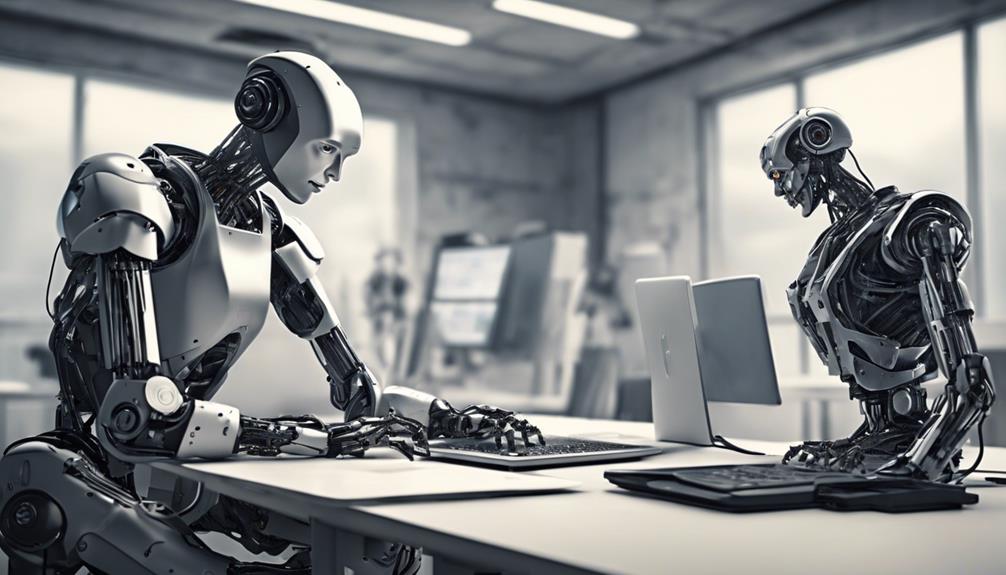
Amidst the rapid evolution of technology, professionals are faced with the imperative task of adapting to the disruptive influence of artificial intelligence (AI) in their respective industries. As AI technologies continue to advance, certain jobs are most likely to be affected, particularly those that handle routine tasks.
To effectively navigate this shift, individuals must focus on honing skills that complement AI capabilities, such as human judgment and critical thinking. Embracing AI tools can help workers streamline their processes, leading to increased efficiency and productivity. Staying updated on AI advancements is crucial to anticipate disruptions in the industry and proactively adapt to changes.
To succeed in the era of AI disruption, it is essential for professionals to seek out resources like online courses and simulations that can enhance their understanding and proficiency with AI technologies. Collaborating with AI systems can also significantly improve job performance and contribute to long-term career growth. By developing the necessary skills and embracing AI tools, individuals can not only adapt to AI-driven changes but also thrive in an increasingly automated work environment.
Navigating AI-Driven Workplace
Navigating the ever-evolving landscape of the AI-driven workplace requires a strategic blend of technological proficiency and human-centered skills. To excel in this dynamic environment, consider the following key strategies:
- Enhance Client Service Skills: Focus on improving customer satisfaction, problem-solving abilities, conflict resolution, and adaptability to stand out in the AI-driven workplace.
- Stay Updated on Technological Advancements: Embrace AI tools for increased efficiency and productivity by staying informed about the latest technological trends and advancements.
- Skill Development Through Virtual Simulations: Utilize virtual simulations to hone your skills, practice real-world scenarios, and enhance your problem-solving abilities.
- Blend Human Interaction with Technological Advancements: Combine the efficiency of AI automation with the irreplaceable human touch to provide unique value and differentiate yourself in the workplace.
- Implement Career Growth Strategies: Invest in continuous learning, seek out opportunities for advancement, and proactively plan for your professional development to ensure long-term success in an AI-influenced work environment.
Frequently Asked Questions
What Kind of Jobs Is AI Replacing?
AI is increasingly displacing roles that involve repetitive tasks across sectors like transportation, administration, production, and services. Jobs susceptible to replacement include data entry, assembly line work, telephone sales, law, finance, and business management.
What Job Will Be Most Affected by Ai?
Professions that rely heavily on repetitive tasks or data processing, such as financial managers, accountants, and market traders, are most affected by AI automation. AI tools efficiently handle routine duties, potentially displacing human workers in these roles.
What Jobs Will Be Gone by 2030?
By 2030, AI is likely to replace jobs in transportation, administration, production, and services due to automation of routine tasks. Sectors at lower risk include management, healthcare, education, and construction, which rely on human interaction and problem-solving skills.
Which Jobs Can Chatgpt Replace?
ChatGPT can replace roles like telephone salespersons, solicitors, psychologists, teachers, and market traders. Its capabilities extend to generating article outlines, summarizing documents, and handling routine tasks efficiently. AI tools like ChatGPT enhance productivity and automate repetitive tasks.
Conclusion
In conclusion, the rapid advancement of AI technology poses a significant threat to various job sectors, with routine tasks being particularly vulnerable to automation. To stay relevant in the evolving job market, individuals must continuously update their skills and embrace AI tools for increased efficiency.
According to a recent study by McKinsey, it is estimated that up to 800 million jobs worldwide could be replaced by automation by 2030. It is imperative for individuals to adapt to this disruption and future-proof their careers.
Ava combines her extensive experience in the press industry with a profound understanding of artificial intelligence to deliver news stories that are not only timely but also deeply informed by the technological undercurrents shaping our world. Her keen eye for the societal impacts of AI innovations enables Press Report to provide nuanced coverage of technology-related developments, highlighting their broader implications for readers.
AI News
How AI Cannot Replace Human Creativity
Tapping into the limitations of AI, discover the irreplaceable essence of human creativity and the intangible qualities that set it apart.

Artificial intelligence has truly transformed many aspects of our lives, showcasing impressive capabilities in fields like data analysis, automation, and problem-solving. However, when it comes to creativity, AI struggles to capture the genuine essence of human creativity.
The intricacies of human emotions, the depth of personal experiences, and the intuitive leaps of creativity are integral to the creative process. While AI can mimic certain creative outputs, the spontaneous and deeply personal nature of human creativity remains a unique and irreplaceable facet.
This discussion delves into the fundamental disparities between AI and human creativity, highlighting the intangible qualities that set human innovation apart.
Key Takeaways
- Human creativity excels with emotional intelligence and intuition, aspects beyond AI's capabilities.
- AI lacks the depth to challenge norms and evoke emotional connections like human creativity.
- Human intuition drives unique pathways in creativity, surpassing AI's predictable nature.
- Collaborative synergy between AI and humans enhances innovation, blending data insights with human creativity effectively.
AI's Limitations in Creative Expression
In the realm of creative expression, the limitations of AI become apparent as it grapples with replicating the depth of human emotions and the complexity of abstract thinking. AI, while proficient at identifying patterns and generating new ideas based on data inputs, falls short in capturing the essence of human creativity. It lacks the emotional intelligence necessary to infuse personal experiences into its creations, hindering its ability to produce content that resonates on a deeply human level.
Human creativity thrives on intuition, unpredictability, and the amalgamation of personal perspectives, elements that AI struggles to comprehend and replicate authentically. While AI can augment human creativity by streamlining certain processes and providing data-driven insights, it cannot serve as a complete replacement for the intricate and nuanced nature of human creative expression. The essence of creativity lies not only in the output but also in the journey, emotions, and individuality that humans bring to the artistic process, aspects that AI, with all its computational power, cannot truly emulate.
Emotional Intelligence in Human Creativity

With emotional intelligence as the guiding force, human creativity transcends mere creation to become a profound reflection of the human experience. Emotional intelligence is the cornerstone upon which artists express feelings, connect with audiences, and imbue their work with depth and richness. It enables creatives to delve into the intricacies of human emotions, driving inspiration and fostering innovation. Through storytelling, artists can weave narratives that resonate on a personal level, infusing their creations with authenticity and relatability.
Emotional intelligence allows creators to tap into their innermost thoughts and experiences, translating them into art forms that evoke profound emotional responses. This ability to navigate and understand one's emotions not only adds layers of meaning to the work but also establishes a genuine connection with the audience. The authenticity and relatability that stem from emotional intelligence create a sense of intimacy between the creator and the observer, elevating the creative experience to one of mutual understanding and shared humanity.
The Value of Human Intuition
Drawing on the intricate interplay between emotional intelligence and human creativity, the invaluable role of human intuition emerges as a dynamic force shaping innovative pathways in artistic endeavors. Human intuition, rooted in subconscious processes and emotional intelligence, plays a vital role in creative processes by enabling individuals to tap into their innermost thoughts and feelings. It involves rapid pattern recognition, drawing on past experiences to guide decision-making and spark innovative ideas that defy conventional logic. Unlike artificial intelligence, human intuition encompasses a blend of tacit knowledge and personal insights that are challenging to replicate in algorithms.
This unique cognitive ability not only drives innovation but also adds a human touch to artistic expressions, infusing them with depth and individuality. The value of human intuition lies in its capacity to inspire creativity beyond the confines of traditional problem-solving methods, offering a fresh perspective that can lead to groundbreaking discoveries. In the realm of creativity, human intuition stands as a beacon of ingenuity, guiding individuals towards uncharted territories of imagination and innovation.
Human Innovation Beyond AI

Human creativity, with its profound ability to transcend the limitations of artificial intelligence, embodies a boundless realm of imaginative exploration and pioneering ingenuity. While AI technology has made remarkable advancements, it cannot replace the depth and richness of human innovation.
Human creativity is likely to continue surpassing AI-generated content due to its basis in the complexities of human experience. AI systems lack the emotional intelligence, intuition, and abstract thinking that drive human creativity. The essence of human innovation lies in its connection to cultural influences, societal norms, and individuality, elements that AI struggles to replicate.
Human creativity often leads to groundbreaking solutions by challenging boundaries and breaking norms, aspects that AI may not conceive. The intricate fusion of experience, emotions, and cognitive processes within human creativity forms a tapestry of inspiration that AI cannot fully comprehend.
As we navigate the evolving landscape of technology, the unique spark of human creativity will remain a beacon of innovation beyond the reach of AI.
Collaborative Potential of AI and Humans
Embracing the evolving landscape of technology, the collaborative potential between AI and humans heralds a new era of creativity and innovation through synergistic partnerships. AI tools offer data-driven insights that inspire innovative ideas, while humans can harness these tools for efficient problem-solving, complementing their creative processes.
The synergy between AI and humans merges computational power with human intuition and experience, leading to novel solutions that push the boundaries of creativity. By streamlining tasks and providing suggestions, AI allows humans to focus on the more creative aspects of their work, enhancing overall productivity.
This collaboration not only enhances individual capabilities but also fosters a collective intelligence that is greater than the sum of its parts. The combination of AI's analytical prowess and humans' imaginative thinking opens new avenues for exploration and discovery. Together, AI and humans can tackle complex challenges, uncover hidden patterns, and drive innovation to unprecedented levels.
The future holds immense promise as this partnership continues to evolve, paving the way for groundbreaking advancements in various fields.
Frequently Asked Questions
Why Can't AI Replace Human Creativity?
AI falls short of human creativity due to its incapacity to harness emotions, personal experiences, and abstract thinking. The intricate interplay of intuition, unpredictability, and cultural influence in human creativity remains beyond the grasp of artificial intelligence.
Can AI Emulate Human Creativity?
AI can simulate human creativity to a certain extent, showcasing impressive feats like composing music or painting. However, true creativity, rooted in emotions and personal experiences, remains a domain exclusive to humans due to its deep complexity and nuanced nature.
How AI Cannot Replace Human Intelligence?
AI cannot replace human intelligence due to its limitations in understanding complex emotions, intuition, and abstract thinking. Human creativity thrives on emotional depth and unpredictability, elements that AI struggles to replicate, making it unable to fully replace human ingenuity.
Can AI Never Replace Art?
While AI has made significant advancements in creating art, it still struggles to fully replace the intricate blend of human emotions, perspectives, and cultural influences that artists infuse into their work. The essence of art remains uniquely human.
Conclusion
In conclusion, the intricate tapestry of human creativity, woven with emotions, intuition, and individuality, remains a realm unattainable by artificial intelligence.
While AI can offer tools and inspiration, the essence of human creativity transcends its capabilities.
The collaborative potential between AI and human creativity holds promise for innovative outcomes, yet the depth and complexity of human expression continue to distinguish our creative endeavors as irreplaceable.
Ava combines her extensive experience in the press industry with a profound understanding of artificial intelligence to deliver news stories that are not only timely but also deeply informed by the technological undercurrents shaping our world. Her keen eye for the societal impacts of AI innovations enables Press Report to provide nuanced coverage of technology-related developments, highlighting their broader implications for readers.
AI News
How AI Is Replacing White Collar Jobs: a Guide
Open the door to the future of work as AI revolutionizes white-collar jobs, revealing the unprecedented transformations and implications that lie ahead.

As different sectors embrace the benefits of artificial intelligence, such as enhanced productivity and creativity, we are witnessing notable transformations in white-collar occupations. From automated data analysis to algorithm-driven legal research, the expansion of AI into fields once seen as secure for professionals calls for a careful examination of the upcoming work landscape.
The implications of this shift extend beyond individual job roles, raising pertinent questions about the socioeconomic fabric and educational paradigms that underpin our workforce. In exploring the nuanced interplay between technology and employment, we are compelled to confront the multifaceted repercussions of AI's ascent in reshaping the contours of white-collar jobs.
Key Takeaways
- White-collar professions like legal and science research face high risk of AI job displacement.
- Continuous learning and upskilling are crucial to adapt to AI technologies in white-collar roles.
- Creativity and critical thinking skills are key to staying relevant amidst AI advancements.
- Professionals must collaborate with AI systems to enhance expertise and navigate job market changes.
Impact of AI on White-Collar Roles
The proliferation of artificial intelligence (AI) technologies is significantly reshaping the landscape of white-collar professions. Particularly impacting roles traditionally held by knowledge workers such as software developers. AI tools like ChatGPT have raised concerns about potential job replacements in various white-collar professions. This technological revolution poses a significant risk to white-collar workers, unlike previous advancements.
Knowledge workers in fields such as legal, scientific research, and administration are particularly vulnerable to being replaced by AI systems that can perform tasks more efficiently and accurately. The threat of job loss looms over these professionals as AI technologies continue to advance rapidly.
As AI continues to evolve, white-collar workers must adapt to remain relevant in the workforce. While roles that involve a significant human element, like driving, child care, and in-person communication, are less susceptible to AI replacement, many other knowledge-based professions are at high risk.
To thrive in this changing landscape, white-collar workers must embrace upskilling, reskilling, and continuous learning to stay ahead of the curve and secure their place in the future job market.
Industries Facing Displacement
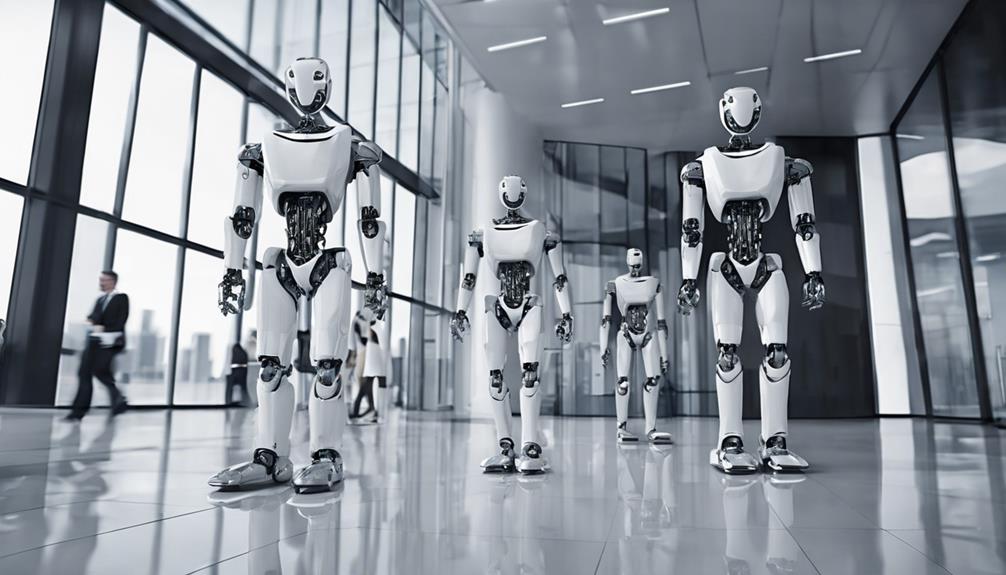
Industries across the white-collar sector are confronting the imminent reality of displacement as artificial intelligence technologies advance at a rapid pace, posing a substantial threat to traditional roles in legal, scientific research, and administration. According to labor data, legal professions face a high risk of obsolescence, with a potential 78% of jobs being replaced by AI by 2023. Similarly, science researchers have a significant risk, with 61% of roles facing displacement due to AI advancements. Administrative roles are also at risk, with a potential obsolescence rate of 57% as AI technologies continue to evolve. High-salary jobs over $90,000 are particularly vulnerable to automation, leading to potential job displacement in white-collar sectors. The impact of AI on white-collar workers is significant, with technology like ChatGPT raising concerns about job replacement in various professions.
| Industry | Potential Job Displacement |
|---|---|
| Legal Professions | 78% |
| Science Research | 61% |
| Administration | 57% |
Strategies for Professional Adaptation
Professionals navigating the evolving landscape of white-collar jobs can strategically leverage AI tools to enhance their productivity and adapt to the changing demands of the industry.
To effectively adapt to the technology's potential impact on white-collar roles, professionals can consider the following strategies:
- Continuous Learning: Invest in upskilling and reskilling to stay relevant in roles that complement AI technologies.
- Embrace Collaboration: Work alongside AI systems to leverage their capabilities and amplify your own expertise.
- Focus on Creativity: Enhance skills that are less susceptible to automation, such as critical thinking and creativity.
- Monitor Industry Trends: Stay informed about ongoing advancements in AI to anticipate changes in job requirements and market demands.
Future of White-Collar Employment

Given the escalating integration of AI technologies across various sectors, the future landscape of white-collar employment stands at a critical juncture where adaptation and innovation are imperative for sustained relevance and success.
White-collar workers, particularly those in roles like software development, are facing high exposure to AI technologies that could potentially replace their jobs. The advent of AI tools such as ChatGPT raises concerns about job displacement in numerous white-collar professions, impacting knowledge workers in legal and administrative roles significantly.
Unlike previous technological revolutions, the AI revolution poses a unique risk to white-collar workers, creating uncertainties about future job security. As AI continues to advance, the future of white-collar employment is marked by challenges that necessitate proactive measures from professionals to navigate the changing landscape.
Understanding the implications of AI on white-collar jobs is crucial for individuals to prepare for the evolving demands of the future employment market.
AI's Influence on Job Market Trends
The impact of AI on job market trends is becoming increasingly profound, reshaping the landscape of white-collar professions with implications for various industries and roles. As AI advancements continue to evolve, job market trends are reflecting significant changes, particularly within the white-collar sector. Key points to consider include:
- 78% of legal jobs could become obsolete by 2023 due to AI advancements.
- Science researchers face a 61% potential risk of obsolescence in their roles.
- Administrative positions have a 57% chance of being replaced by AI technologies.
- Jobs with salaries exceeding $90,000 are most vulnerable to automation in the white-collar sector.
These statistics highlight the imminent transformation in the job market trends, especially affecting legal, scientific, and administrative professions. As AI technologies advance, it is crucial for professionals in these fields to adapt, upskill, and embrace the changing dynamics to remain competitive in the evolving job market landscape.
Frequently Asked Questions
Is AI Going to Replace White-Collar Jobs?
The impact of AI on white-collar jobs is a pressing concern. As technology evolves, the potential for job displacement looms large. Professionals in lucrative sectors like law and IT with high automation potential face heightened risk.
What White-Collar Jobs Are Under Threat From Ai?
White-collar jobs in legal, scientific, and administrative sectors are at risk from AI advancements. Roles with salaries exceeding $90,000 face higher automation potential. Legal jobs might see a 78% obsolescence by 2023, while science researchers and administrative roles face 61% and 57% replacement probabilities, respectively.
What Jobs Will AI Eventually Replace?
AI is anticipated to replace white-collar jobs like software developers, legal professionals, and administrative roles due to automation's advancements. Statistics predict that 78% of legal jobs, 61% of science research positions, and 57% of administrative roles may be automated soon.
What Jobs Are Hardest to Replace by Ai?
Roles that require high levels of human interaction, emotional intelligence, and critical thinking are the hardest for AI to replace. Professions such as therapists, teachers, social workers, and creative artists rely on uniquely human skills that machines struggle to replicate.
Conclusion
In conclusion, the impending wave of AI replacing white-collar jobs serves as a stark reminder of the need for adaptability in the workforce. Industries must strategize and prepare for the inevitable changes brought about by technology advancements.
While the impact may seem daunting, it is crucial for professionals to stay informed and proactive in navigating the evolving job landscape. The future of white-collar employment hinges on the ability to embrace AI integration and leverage its potential for growth and innovation.
Ava combines her extensive experience in the press industry with a profound understanding of artificial intelligence to deliver news stories that are not only timely but also deeply informed by the technological undercurrents shaping our world. Her keen eye for the societal impacts of AI innovations enables Press Report to provide nuanced coverage of technology-related developments, highlighting their broader implications for readers.
-

 AGI and AI Impact on Human Relationships6 days ago
AGI and AI Impact on Human Relationships6 days agoIs the Threat of AI Overblown? Unpacking Myths
-

 AI in Business3 weeks ago
AI in Business3 weeks agoAI at Work Beyond Cloud Cuts Company Costs
-

 AGI and AI Impact on Human Relationships2 weeks ago
AGI and AI Impact on Human Relationships2 weeks agoAGI and AI’s Effect on Human Relationships
-

 AGI and AI Impact on Human Relationships1 day ago
AGI and AI Impact on Human Relationships1 day agoIs AGI a Threat to Humanity? Explore the Risks
-

 AGI and AI Impact on Human Relationships3 weeks ago
AGI and AI Impact on Human Relationships3 weeks agoImpact of Artificial Intelligence on Humanity
-

 AGI and AI Impact on Human Relationships3 weeks ago
AGI and AI Impact on Human Relationships3 weeks ago1X Technologies Androids Built to Benefit Society
-

 AGI and AI Impact on Human Relationships2 weeks ago
AGI and AI Impact on Human Relationships2 weeks agoAI’s Influence on Society: Insights & Outlook
-

 AGI and AI Impact on Human Relationships2 weeks ago
AGI and AI Impact on Human Relationships2 weeks agoConsequences of Reaching AGI Unveiled
